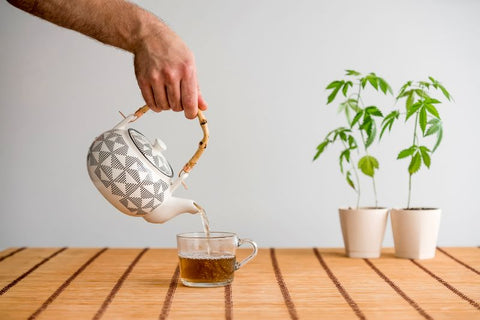Now more than ever, people are keen to understand cannabis from a scientific perspective. Even casual users increasingly want to know about the plant’s many compounds and how each of them contributes to its overall effect.
Case in point: trichomes. If you’re a cannabis enthusiast you’ve likely come across the term by now. It’s quickly becoming a part of the common cannabis lexicon. But how much do you know about them?
In this post, we’ll take you through the ins and outs of cannabis trichomes: what they are, what they do, and how they feature in popular commercial products such as CBD hash.
What Are Those Hairy White Crystals on My Cannabis Flowers?
If you’ve spent any time in a cannabis dispensary, you’ll have noticed a fine layer of little hair-like crystals coating the surface of the flowers. White in colour, they lend the plants a frosty or sugary appearance, as well as a sticky texture. You may have heard them referred to as “THC crystals.”
Those are your trichomes. They’re resin glands that appear as the outgrowths of hair on plants (they also turn up on lichen and algae). The word itself derives from the Greek trichoma, meaning “hair growth.”
Trichome production occurs throughout the plant kingdom. They come in many different forms and have an impressive array of functions, from temperature regulation to essential oil production and pest deterrence.
When it comes to cannabis, stalked glandular trichomes serve an indispensable purpose: they make the resin in which the plant’s main constituents—namely cannabinoids, terpenes and flavonoids—are produced and contained.
Without trichome glands, there is no CBD, no THC, and none of the aromatic compounds that give each strain its characteristic flavour and fragrance. In other words, those sticky, frost-like hairs are essential to the molecular structure of cannabis plants.
The Essential Components of Cannabis Extracts

The growing curiosity about trichomes makes perfect sense when you consider the enormous popularity of cannabis extracts and concentrates. Extracts appeal to consumers because they isolate the plant’s most desirable elements in a single product that is easy to ingest in precise doses.
Because CBD and THC are contained in the resin produced by trichomes, growers today pay very close attention to trichome levels during the cultivation phase. Generally speaking, higher trichome levels will translate to more and richer cannabinoids.
There exist two main classes of trichomes: glandular and non-glandular.
Non-glandular trichomes
Non-glandular trichomes are not involved in the creation of cannabinoids, terpenes or flavonoids. But that doesn’t mean they’re not important.
The principal function of non-glandular trichomes is to protect the cannabis plant as it develops and matures. They do so by warding off predatory insects and animals with their pungent scent and bitter taste.
Non-glandular trichomes also help regulate plant temperature and promote photosynthesis.
Glandular trichomes
Glandular trichomes—specifically those located on female cannabis plants—are like natural industrial units where CBD, THC and other critical compounds are manufactured. Traditionally, they’re divided into three sub-types based on physical structure.
Bulbous trichomes are the smallest variety—so small that they can only be seen with a microscope. True to their name, they feature a bulbous head atop a very low stalk. The jury is still out on the extent of their contribution to cannabinoid production.
Capitate-sessile trichomes, while about four times the size of bulbous trichomes, are still tiny and hardly visible to the naked eye. They consist of a flat globular head on a short stalk. More importantly, they contain cannabinoids and terpenes in high concentrations.
Capitate-stalked trichomes are by far the largest of the three glandular trichomes, with a long stalk and big globular head. Approximately five times bigger than capitate-sessile trichomes, they secret substantially more resin and yield the lion’s share of cannabinoids, terpenes, and flavanoids. Capitate-stalked trichomes are the mother lode of valuable cannabis metabolites.
Using Trichomes to Make HempHash CBD Hash

By now you have a pretty good idea of how trichomes are relied upon to make CBD oils and other cannabis concentrates. Indeed, such products would not be possible without them.
Take HempHash CBD Hash for instance. Our CBD hash is directly sourced from multiple varieties of hemp trichomes. To begin with, we remove the resinous trichomes from the hemp flowers via a natural process that does not involve the use of solvents.
The isolated trichomes are then filtered and refined before finally being compressed into the finished CBD hash products for sale on our site.
In the case of our Moroccan CBD Hemp Hash, four sorts of hemp trichomes are processed using supercritical CO2 cold extraction. This process is sensitive enough to preserve fragile terpenes while eliminating virtually every trace of THC. It contains 22% CBD.
For those seeking a purer option, our Hash Crumble packs about as much CBD into one cookie cake as one could want—72% to be exact. Occupying the middle ground are the BZ1 Bubble Hash (34% CBD) and Isolator CBD Hash (25% CBD).
In any case, you can rest assured that the CBD you purchase from HempHash is 100% cruelty-free, third-party lab tested, and well within the law regarding THC content.



